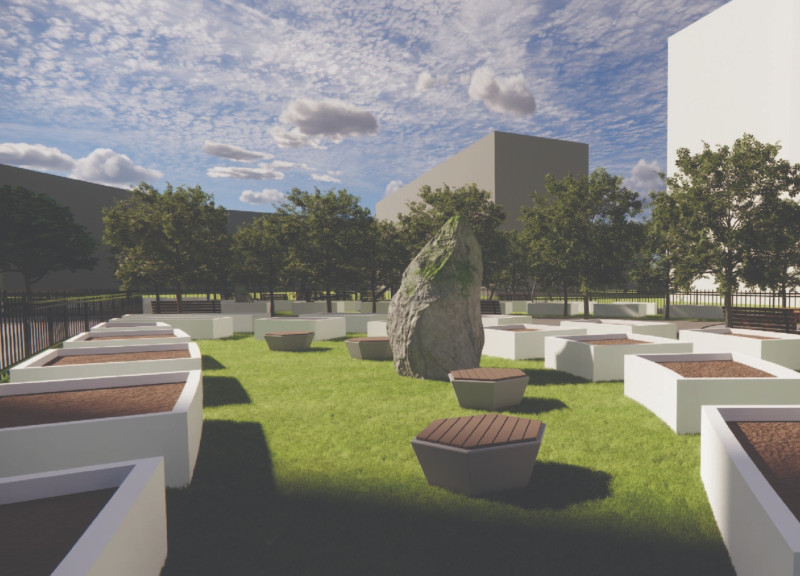5 key facts about this project
At the core of the design is a commitment to sustainability and functionality. The building is designed to accommodate a variety of uses, reflecting the diverse needs of the community it serves. The careful arrangement of spaces promotes both individual and communal activities, encouraging collaboration and interaction. Large, open areas are balanced with intimate spaces, allowing for flexibility in how the building can be utilized over time. This adaptability is a prime consideration, ensuring that the architecture remains relevant in the face of changing social dynamics.
The material palette is a defining aspect of the project. A combination of locally sourced materials, including reinforced concrete, glass, and timber, is utilized to create a warm yet resilient exterior. The use of glass facilitates a strong connection between the interior and exterior, blurring the boundaries and inviting natural light to permeate the interior spaces. This design choice not only enhances the aesthetic appeal but also promotes energy efficiency through the strategic placement of windows, thoughtfully considering solar orientation and views.
In addition to the exterior materials, interior finishes are selected to complement the overall vision of the project. Natural wood accents soften the industrial feel of the concrete, fostering a sense of comfort that resonates with users. These choices reflect an understanding of the human aspects of architecture, emphasizing how materiality impacts user experience.
A unique feature of this architectural design is the incorporation of green spaces throughout the building. Rooftop gardens and vertical green walls are designed not merely as aesthetic enhancements but as vital components of the overall ecological strategy. These spaces serve multiple purposes, providing habitat for local wildlife, improving air quality, and creating serene zones for building occupants to enjoy. The integration of nature into the architectural framework underscores a commitment to biophilic design, emphasizing the benefits of green environments for mental and physical well-being.
When considering the architectural plans and sections, one can observe a careful orchestration of circulation paths that facilitate movement throughout the building. The layout is designed to prioritize accessibility, ensuring that all users can navigate the space comfortably. Thoughtful transitions between different areas, such as public and private zones, are articulated through varying ceiling heights and spatial volumes, enhancing the experiential quality of the design.
Also noteworthy is the attention given to the integration of advanced technology within the architectural design. Smart building systems are incorporated to optimize energy use, monitor environmental conditions, and enhance security. These features ensure that the building is not only functional but also responsive to the needs of its occupants, reflecting a forward-thinking approach to modern architectural practice.
Furthermore, the project's aesthetic qualities are grounded in context. The architectural design pays homage to the local vernacular, using forms and materials that resonate with the surrounding buildings yet presents a fresh perspective. This balance of homage and innovation is crucial in creating a structure that feels both familiar and invigorating.
In sum, this architectural project embodies a holistic approach to design, where each element is intentionally crafted to enhance functionality, sustainability, and user experience. The successful integration of the building into its urban context and the thoughtful selection of materials reinforces the project’s relevance. This design serves as a valuable case study for contemporary architectural practices, encouraging exploration into architectural ideas that prioritize community, ecology, and innovation. For those interested in delving deeper into the nuances of this project, an exploration of the architectural plans, sections, and detailed designs will provide invaluable insights into its thoughtful conception and execution.


























